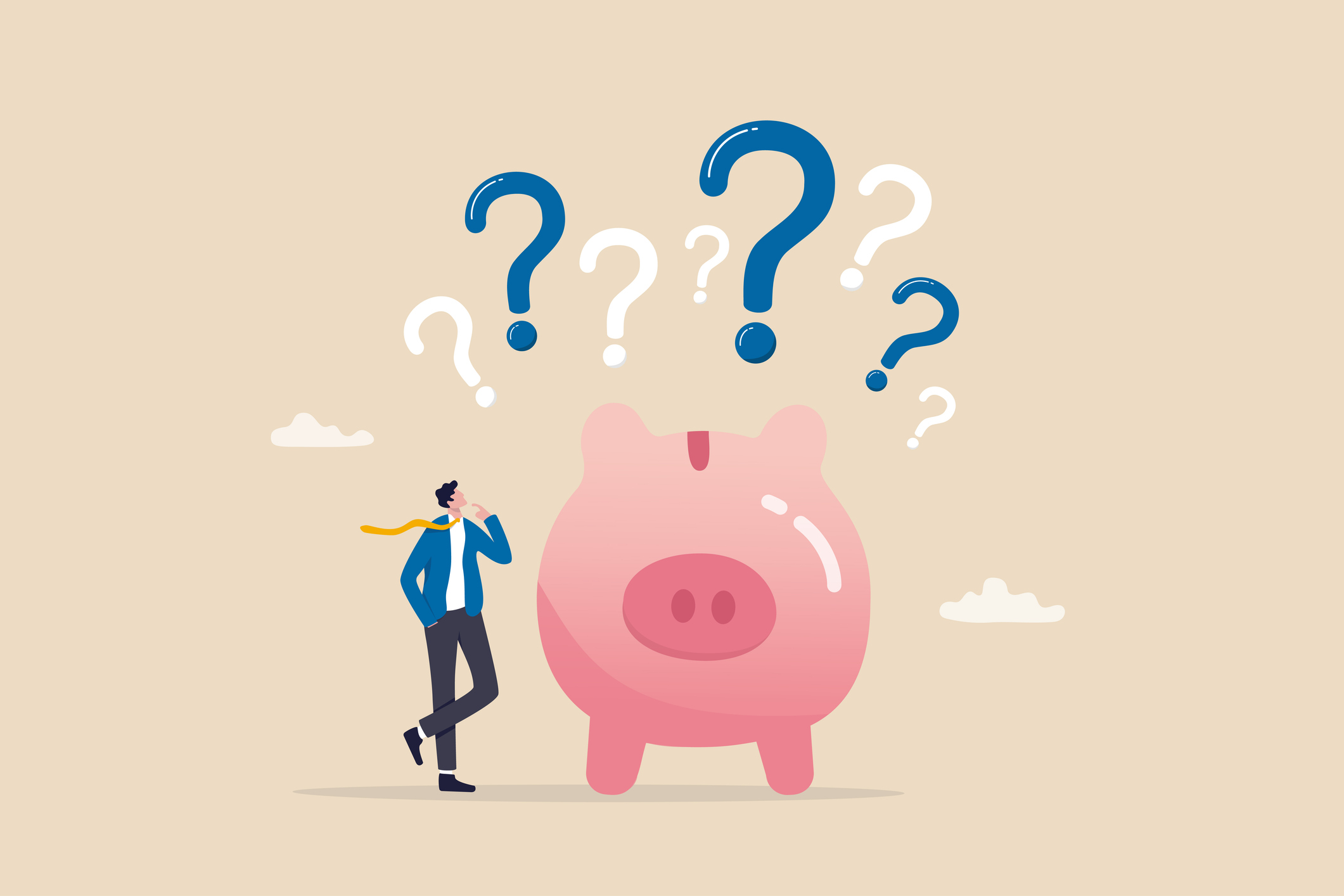ATM Fees Hit Record Highs
Cashing out your money costs more than ever, with ATM fees hitting an all-time high, according to a new survey from Bankrate.


Alexandra Twin
Using an ATM that doesn’t belong to your bank costs more than ever, but other bank fees are taking a nosedive, according to the latest research.
Your bank’s ATM isn’t always the most accessible or convenient option when grabbing cash on the go. However, out-of-network ATMs typically come with pesky fees attached to your transaction. ATM fees are comprised of two parts — a surcharge from the ATM owner and a fee from your own bank. According to a new study, those fees just got higher.
Elevated ATM fees
Consumers are paying an average of $4.73 for out-of-network ATM fees, a new record high, according to Bankrate’s 2023 study on checking accounts and ATM fees. That’s one cent more than the previous record in 2019 and seven cents more than last year. The $4.73 fee is broken down into a $1.58 bank fee and a $3.15 surcharge from the ATM owner. So you may find it more expensive to visit ATMs outside your bank’s network.
From just $107.88 $24.99 for Kiplinger Personal Finance
Become a smarter, better informed investor. Subscribe from just $107.88 $24.99, plus get up to 4 Special Issues

Sign up for Kiplinger’s Free Newsletters
Profit and prosper with the best of expert advice on investing, taxes, retirement, personal finance and more - straight to your e-mail.
Profit and prosper with the best of expert advice - straight to your e-mail.
Bankrate has tracked this information since 1998 and shows ATM fees continuing an upward trend throughout the 26-year-long study. In recent years, many banks have aided in avoiding fees by offering ATM locators, building out massive ATM networks, and even reimbursing a portion of monthly ATM fees.
Record lows in other fees
Although ATM fees are on the rise, other bank fees are nosediving. Overdraft fees are one of the largest fees your bank can charge, costing consumers as much as $38 per occurrence. Still, the average overdraft fee dipped to $26.61— down 11% since 2022 and the lowest in 19 years. Similarly, the average nonsufficient funds (NSF) fee plummeted to $19.94, a 25-year low. Despite the declines, overdraft fees and NSF fees are still charged by 91% and 70% of accounts, respectively, the study found.
As of Q4 in 2022, the Consumer Financial Protection Bureau (CFPB) reported a 48% reduction in bank revenue from overdraft and NSF fees compared to Q4 of 2019. Despite the sharp reduction in revenue, these fees still cost consumers a total of $7.7 billion last year.
Fees vary by area
ATM fees add up quickly, but there are some metropolitan areas that have higher fees than others. In a survey of 25 major metro areas, here are the five with the most expensive average ATM fees:
- Atlanta, GA, $5.33
- Phoenix, AZ, $5.24
- Detroit, MI, $5.21
- Cleveland, OH, $5.13
- San Diego, CA, $4.99
Here are the five major metro areas with the least expensive average ATM fees.
- Boston, MA, $4.24
- Philadelphia, PA, $4.31
- Seattle, WA, $4.34
- Cincinnati, OH, $4.45
- Baltimore, MD, $4.52
Checking accounts
The Bankrate study also looked at checking account fees and minimum requirements, as well as the difference between noninterest-bearing checking accounts and interest-bearing accounts.
Noninterest-bearing checking accounts are mostly free
Checking accounts that don't earn interest are still mostly free, the survey found. Roughly 45% of so-called noninterest-bearing checking accounts are free, meaning they don't charge a monthly service fee. Another 42% of noninterest accounts have no monthly fee when certain direct deposit requirements are met. In total, 87% of noninterest checking accounts are free.
Interest-bearing checking accounts have steep fees, offer little yield
Interest-bearing checking accounts typically charge more than their noninterest-bearing counterparts. The average monthly fee on such accounts is $15.33, down 5% from $16.19 in 2022, but far more than the $5.31 average monthly fee for accounts that don't bear interest.
Interest-bearing accounts often require that a customer maintains a high balance to avoid the monthly fees. The average minimum balance needed to avoid the service fee on an interest account is $8,684, Bankrate reported, versus $469 for a noninterest account.
While interest checking accounts charge a high fee and require a hefty balance, they offer little in the way of yields. The average APY on interest checking accounts inched up to 0.05% in 2023 following two years of yielding a record low of 0.03%, the study showed.
Many savings accounts offer better returns, including high-yield savings accounts. You can use our tool, in partnership with Bankrate, to get the best rate on savings accounts.
Related Content
Profit and prosper with the best of Kiplinger's advice on investing, taxes, retirement, personal finance and much more. Delivered daily. Enter your email in the box and click Sign Me Up.

Seychelle is a seasoned financial professional turned personal finance writer. She’s passionate about empowering people to make smart financial decisions by combining 10 years of finance industry experience with solid research and a wealth of knowledge. Seychelle is also a Nav-certified credit and lending expert who has explored money topics such as debt consolidation, budgeting, credit, and lending in her work for publications including GOBankingRates, LendEDU, and Credible.
- Alexandra TwinSenior Retirement Editor, Kiplinger.com
-
 Fed's Rate Cuts Could Have Impacts You Might Not Anticipate
Fed's Rate Cuts Could Have Impacts You Might Not AnticipateUnderstanding how lower interest rates could impact your wallet can help you determine the right financial moves to make.
-
 Past Performance Is Not Indicative of Your Adviser's Expertise
Past Performance Is Not Indicative of Your Adviser's ExpertiseMany people find a financial adviser by searching online or asking for referrals from friends or family. This can actually end up costing you big-time.
-
 I'm want to give my 3 grandkids $5K each for Christmas.
I'm want to give my 3 grandkids $5K each for Christmas.You're comfortably retired and want to give your grandkids a big Christmas check, but their parents are worried they might spend it all. We ask the pros for help.
-
 CD vs. Money Market: Where to Put Your Year-End Bonus Now
CD vs. Money Market: Where to Put Your Year-End Bonus NowFalling interest rates have savers wondering where to park cash. Here's how much $10,000 earns in today's best CDs versus leading money market accounts.
-
 Smart Money Moves Savers Should Make in 2026
Smart Money Moves Savers Should Make in 2026These steps will get you on the road to achieving your 2026 savings goals.
-
 Want to Change Banks? Try This 'Soft' Strategy
Want to Change Banks? Try This 'Soft' StrategyThe "soft switching" banking trend allows you to explore a new bank account while keeping your primary one. See how it could benefit you.
-
 No-Penalty CD or High-Yield Savings? What Works Best Now
No-Penalty CD or High-Yield Savings? What Works Best NowDiscover which option can help you reach your savings goals quickly.
-
 I Inherited $50,000, and My Retirement is Fully Funded. Where's the Best Place to Store It for Maximum Growth?
I Inherited $50,000, and My Retirement is Fully Funded. Where's the Best Place to Store It for Maximum Growth?These savings solutions can help you maximize returns without the risk.
-
 Where You Choose to Stash $100k Now Comes with a Big Opportunity Cost
Where You Choose to Stash $100k Now Comes with a Big Opportunity CostThe Fed recently cut rates. Here's where to maximize your savings while rates remain higher.
-
 Where to Deposit Your Social Security Check
Where to Deposit Your Social Security CheckIf you receive Social Security checks, where you deposit them matters because it can help grow your earnings. See the best options.
-
 Top Places to Park $10K (or More) as Rates Start to Fall
Top Places to Park $10K (or More) as Rates Start to FallWith more rate cuts upcoming, here are some smart places to maximize your savings on $10,000.